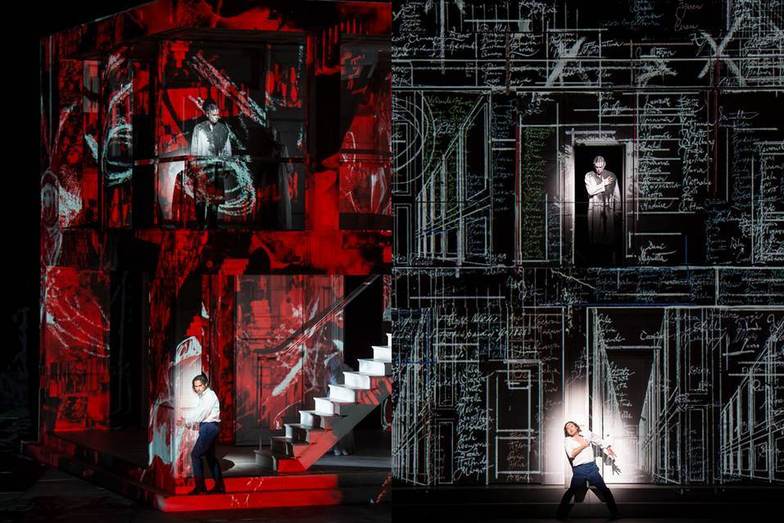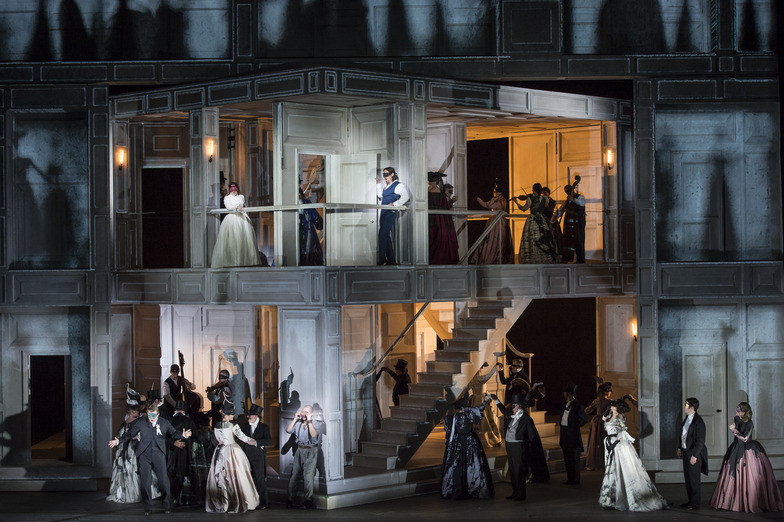"Why Use Technology?"
In this column, "The World of Inspiring Technology," we've covered the latest technologies and their applications. This time, however, I'd like to first introduce the stage of the opera "Tosca," set in Rome 200 years ago.
The scene in the photo above realistically recreates a Roman church. This lavish and splendid stage, which gives the audience the illusion of being inside the church itself, holds appeal even for those beyond opera fans. While opera stages often featured straightforward, traditional stage design using woodwork and the like, even in the world of traditional arts like opera, the latest technology is now beginning to be utilized. Please see the next photo and video.

Projection mapping production by the Royal Opera House (photo: ROH/Bill Cooper, 2014 for Don G.)
This is the stage for Mozart's opera "Don Giovanni," performed by the Royal Opera House in 2014 and coming to Japan this September ( http://www.roh2015.jp/don.html ). Projection mapping is used throughout every act of this production. Why use projection mapping on an opera stage? Kasper Holten, the Royal Opera's Opera Director who oversaw this production, explains the reasoning:
"The protagonist, Don Giovanni, possesses a rich imagination, and the story unfolds within the fantasy world he creates. I felt projection mapping was the perfect medium to depict such a world."
Indeed, watching this production, the protagonist's emotions and thoughts are expressed with remarkable speed, and the stage settings change in the blink of an eye. It beautifully captures subtle shifts in emotional states, offering something distinct from the fixed, physical sets like those made of wood. While utilizing projection mapping in the world of opera, with its long tradition, seems groundbreaking, we asked the up-and-coming director Tom Suga, active in both Germany and Japan, about this point.
"Opera is sensitive to the latest technology. Since its birth over 400 years ago, it has constantly entertained audiences with new innovations. The use of video on stage is no longer unusual; this spring in Berlin, a new production featuring robots performing alongside humans became a hot topic. I too want to be proactive about the potential of the latest technology and actively use it if it fits my directorial intent. The emergence of new technology can reveal fresh appeal even in works created centuries ago. However, the opera stage is not a showcase for the latest technology. I want to continue exploring the rich potential of human storytelling."
Even in the seemingly conservative world of opera, there appears to be a keen sensitivity to the latest technological trends.
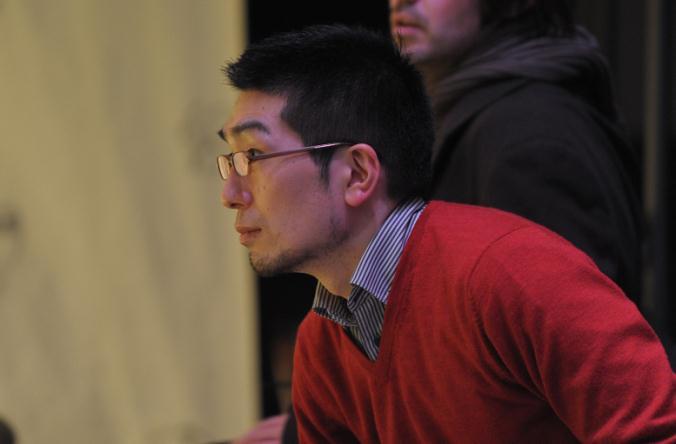
Mr. Sugao, an up-and-coming opera director active in Germany and Japan (photo: Matthias Baus)
What about Japanese Kabuki? Kabuki stages have long been proactive in utilizing technology. For example, techniques like "quick changes" where one actor plays multiple roles, or "suspension" where actors float through the theater, have been performed since the Edo period. Within this Kabuki world, a surprising performance took place in Las Vegas this August.
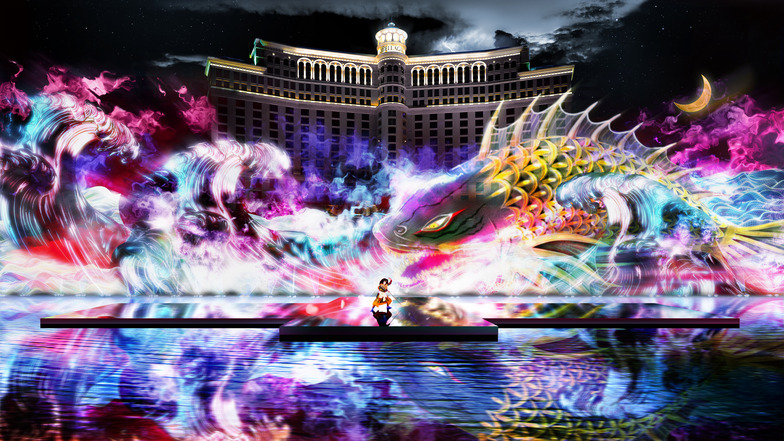
©2015 Shochiku・teamLab
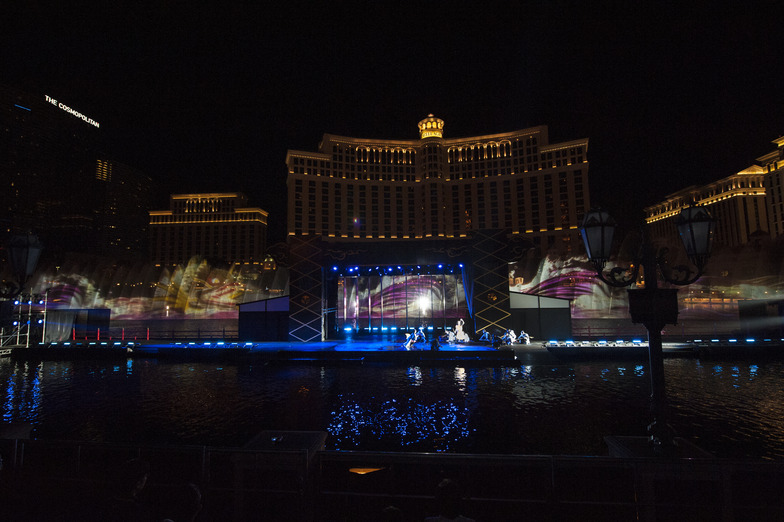
"Panasonic presents Kabuki Spectacle at FOUNTAINS OF BELLAGIO Koi-Tsukami 'Fight with a Carp'"
(August 14-16, 2015 · Las Vegas/Bellagio © Shochiku Co., Ltd.)
This production, the first installment of Shochiku's new kabuki-themed entertainment project, was staged at the Bellagio Fountains in Las Vegas. It created an unprecedented kabuki entertainment experience by projecting a giant hologram of a carp (produced by teamLab) onto the water screen formed by the Bellagio's massive fountains. Tetsuya Okazaki, Executive Managing Director of Shochiku overseeing the production, stated to the media: "Kabuki is a traditional Japanese theater with a 412-year history, but like opera, it has created new works reflecting each era. Even pieces now considered representative classics were cutting-edge new works when first performed. Costume designs worn by popular actors became fashion trends, and the music performed sparked booms as it was played by amateur enthusiasts. Furthermore, it is a performing art that has been proactive in technology, such as inventing the revolving stage."
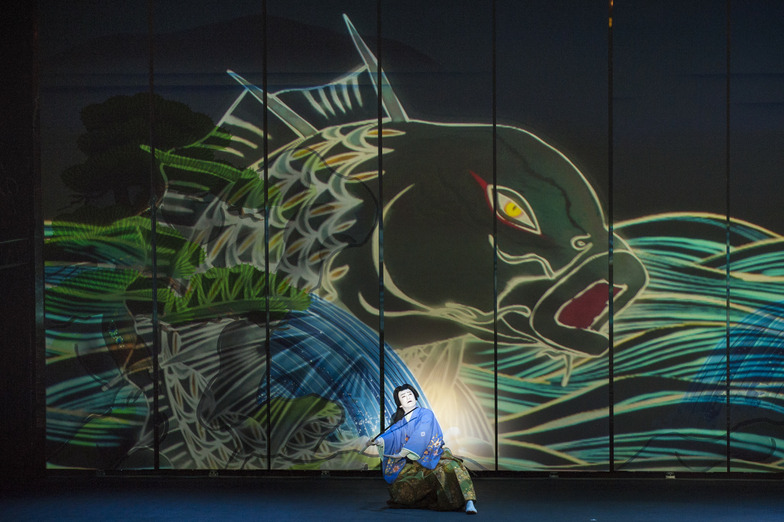
"Panasonic presents Kabuki Spectacle at FOUNTAINS OF BELLAGIO Koi-Tsukami 'Fight with a Carp'"
(August 14-16, 2015, Las Vegas/Bellagio © Shochiku Co., Ltd.)
This time, we examined recent examples where technology is being applied to traditional arts. While technology is currently in vogue, it's not simply a matter of using any technology for its own sake. As seen in these two examples, meaningful technological application should be mindful of the audience's (recipient's) sensibilities. Technology evolves daily, but certain aspects of the audience's sensibilities remain unchanged over time. The key point is whether integrating technology results in superior entertainment.
The effects of digital technology in stage production include:
① Beautiful visual effects unique to cutting-edge technology
② Digital capability to easily change stage and scene settings
③ Attracting new audiences like the smartphone generation
④ Creating new works simply by changing software
Going forward, I expect to see more interactive productions using smartphones and other devices, increasing audience participation.
It's said that technological evolution changes the rules of society, and it seems the rules within the world of production are also set to change.
Dentsu Inc. Experience Technology is a technology group actively creating unprecedented emotional experiences (experiences) by combining various technologies, both digital and analog.
Even ideas that seem impossible to realize may find a path to implementation through technology.
Feel free to contact us at et-info@dentsu.co.jp (Attn: Yoneyama/Murakami) with any opinions, inquiries, or consultations.


